REVIEW – When someone mentions Manfrotto, what comes to mind are photo and video camera tripods and monopods. To me, Manfrotto was synonymous with them. So, when I heard that Manfrotto had camera gimbals I knew I wanted to try one out and see just how well it performed. If their gimbals are as solid in build and quality as their tripods then I wanted to see it for myself. This review will be my thoughts and impressions on the Manfrotto MVG220 3-Axis Gimbal, along with a few extras that are made to complement and enhance the gimbal.
What is it?
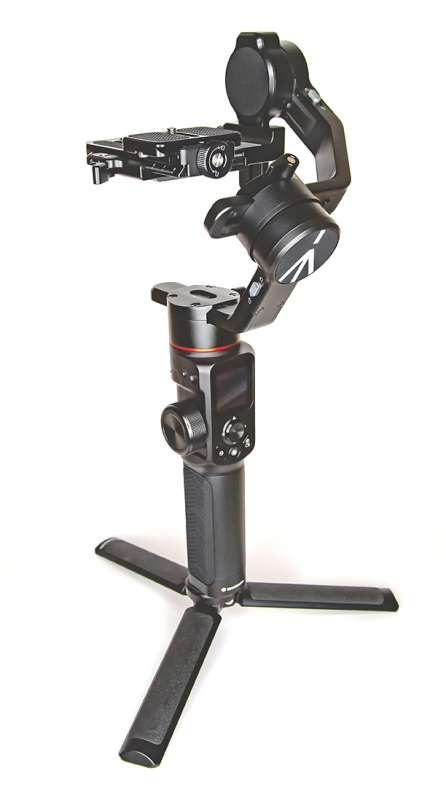 The Manfrotto MVG220 3-Axis Gimbal is a stabilizing device for your mirrorless or DSLR camera which helps to keep your camera steady giving you smooth and flowing shots. The gimbal balances you camera using three electronic axis to prevent unwanted shaky or jittery shots when you are hand-holding your camera. Using this gimbal lets your camera record a more steady and cinematic shoot. Plus, it can help you operate and position your camera in more interesting and creative angles.
The Manfrotto MVG220 3-Axis Gimbal is a stabilizing device for your mirrorless or DSLR camera which helps to keep your camera steady giving you smooth and flowing shots. The gimbal balances you camera using three electronic axis to prevent unwanted shaky or jittery shots when you are hand-holding your camera. Using this gimbal lets your camera record a more steady and cinematic shoot. Plus, it can help you operate and position your camera in more interesting and creative angles.
What’s in the box?
- MVG220 Gimbal
- Anti-slip Metal Folding Tripod
- Removeable Undersling Grip Handle
- Screws and Allen Wrench
- ARCA Quick Release Plate
- Quick Release Plate
- Lens Holder
- Drawstring Pouch
- USB 2.0 to Micro USB Cable
- USB 3.0 to Micro 3.0 USB Cable
- USB 2.0 to Mini USB Cable
- USB 2.0 to USB-C Cable
- USB-C to Multi USB Cable
- USB-C to DC 2.5mm Cable
- USB-C to TRS 2.5 Cable
Hardware specs
Weight 2.43 lbs/1.1 kg
Dimensions 2.80 x 8.23 x 13.78 in/7.1 x 20.9 x 35 cm
Payload 4.85 lbs/2.2 kg
Tilting Angle 230 °
Rolling Angle 360 °
Panning Angle 360 °
Controllable Tilt Range +175° to -55°
Battery Li-Ion
Charging Mode USB port
Attachment Type 1/4″-20 standard tripod mount
Charging Time 1.5 hours
Usage Time Up to 7 hours
Connection Wi-Fi, USB-C port
Minimum Working Temperature 14 °F/-10 °C
Maximum Working Temperature 113 °F/45 °C
Design and features
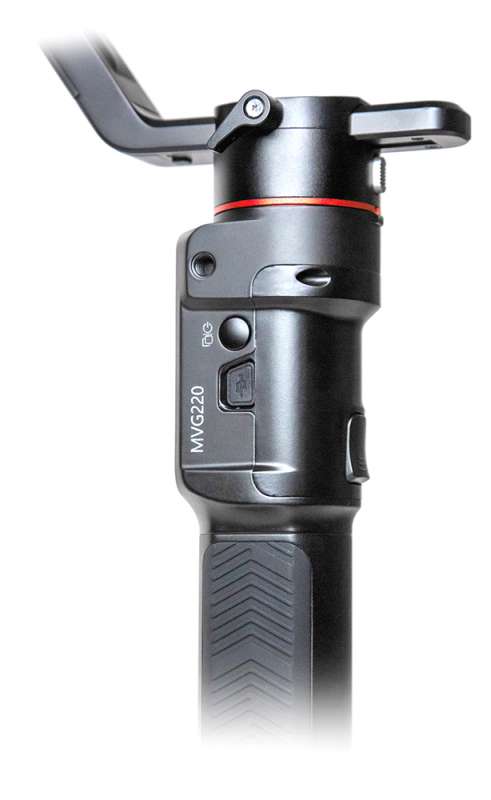 The Manfrotto 220 gimbal is built solid and feels solid while the buttons, joystick, LCD touchscreen, multi-function knob, and other moving parts are very responsive. The main handle of the gimbal is a good size for holding and carrying, in my opinion. The handle isn’t too small or too big to hold and I feel like I have a firm grip of the gimbal, even when I hold it with just one hand. Although the Manfrotto 220 gimbal is designed for small mirrorless cameras, it can still manage a bigger DSLR camera since the maximum payload for the gimbal is 4.85 lbs, or 2.2 kg (hence the name 220). The is also another model available that’s a little beefier and can handle a heavier payload, the Manfrotto 460, which has a payload of 10.14 lbs (4.6 kg). For those times when you have a large lens attached to your camera, the gimbal comes with a Lens Holder to help support the bigger lens.
The Manfrotto 220 gimbal is built solid and feels solid while the buttons, joystick, LCD touchscreen, multi-function knob, and other moving parts are very responsive. The main handle of the gimbal is a good size for holding and carrying, in my opinion. The handle isn’t too small or too big to hold and I feel like I have a firm grip of the gimbal, even when I hold it with just one hand. Although the Manfrotto 220 gimbal is designed for small mirrorless cameras, it can still manage a bigger DSLR camera since the maximum payload for the gimbal is 4.85 lbs, or 2.2 kg (hence the name 220). The is also another model available that’s a little beefier and can handle a heavier payload, the Manfrotto 460, which has a payload of 10.14 lbs (4.6 kg). For those times when you have a large lens attached to your camera, the gimbal comes with a Lens Holder to help support the bigger lens.
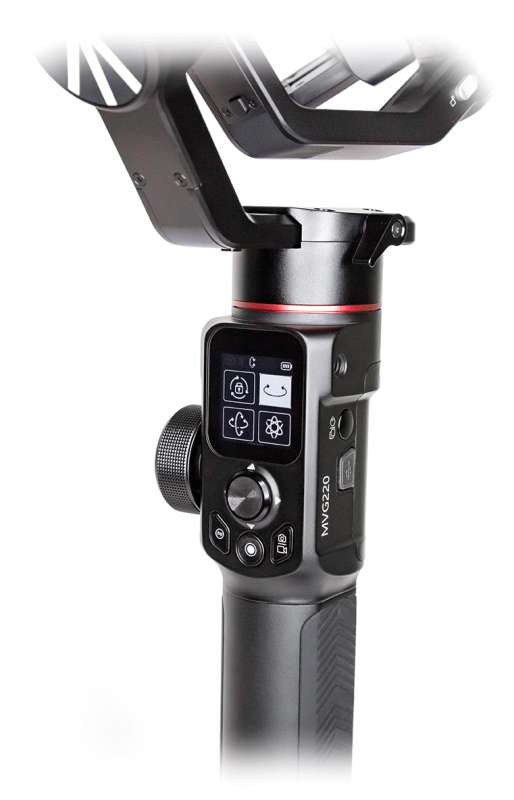
What I like about the buttons on the gimbal is that they are placed in very accessible spots where your fingers can reach the buttons without overstretching. For example, I can operate the joystick and then easily tap or swipe the LCD touchscreen without re-positioning my grip hand. Also, I was also able to engage the thumbwheel with the same hand.
Speaking of the LCD screen, I found it to be fairly responsive when I would swipe it or tap on it. The screen response was effective whether I dragged my finger across the touchscreen or quickly swiped it. The LCD screen is where you can change gimbal modes, settings, and features. There are four modes available for the gimbal: Pan, Follow, All Lock, and All Follow.
The Pan Mode is the Default mode for the gimbal. In this mode, the roll and tilt directions are fixed. The camera moves in response to the user’s hand movements as it twists to the left and right. In the Follow Mode, the roll direction is locked and the camera moves in response to the user’s hand movements to the left, right, up, and down. In the All Lock mode, the camera is basically “locked” in the direction that the camera is pointed and won’t move in any of the directions when the gimbal is panned or tilted. And finally, in the All Follow mode, the camera moves in all directions that the gimbal is positioned in. I’m not a big fan of the All Follow mode. It is probably best suited for more creative or abstract shots since it can make the camera shot seem displaced and all over the place. But if that is what you are going for then this mode would be perfect to use.
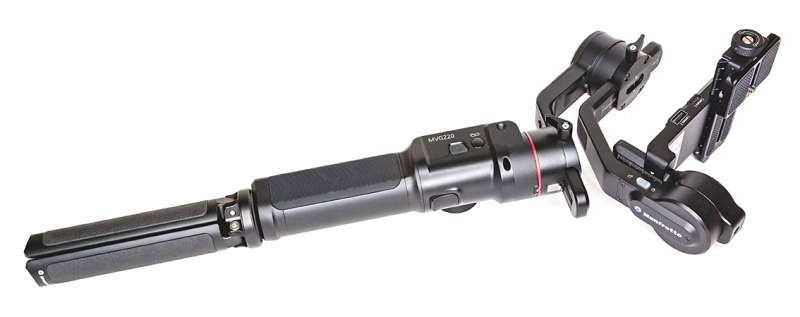 There are other Mode settings such as the Selfie Mode which spins the gimbal around facing the camera towards you. This is a good feature to use when you’re walking with the gimbal in hand and want to do some vlogging or record yourself for your social media sites. This feature eliminates the need to actually turn the gimbal around with your hands. And with a double-tap of the Trigger button, you can reset the gimbal to face forward again.
There are other Mode settings such as the Selfie Mode which spins the gimbal around facing the camera towards you. This is a good feature to use when you’re walking with the gimbal in hand and want to do some vlogging or record yourself for your social media sites. This feature eliminates the need to actually turn the gimbal around with your hands. And with a double-tap of the Trigger button, you can reset the gimbal to face forward again.
An interesting feature of the gimbal is the Inception Mode which spins the gimbal on its Roll axis. This makes the camera spin in a 360° left or right direction. You can set the Inception Mode to spin once or continuously. This spinning 360° mode was made popular from the movie of the same name, Inception, starring Leonardo DiCaprio. In the movie, there were several spinning camera shots to give the scenes an illusion of a dramatic dreamlike alternative reality. Another feature within the Menu settings is the Time Lapse feature, which you can access from the gimbal’s Menu or from the Manfrotto app. This feature allows you to capture some eye-catching footage by setting a starting and stopping point, and a time of duration, for the gimbal to move. This is a perfect feature for when you want to make those time-lapse videos of the clouds rolling by, or a flower blooming open, or the golden hours at sunset or sunrise.
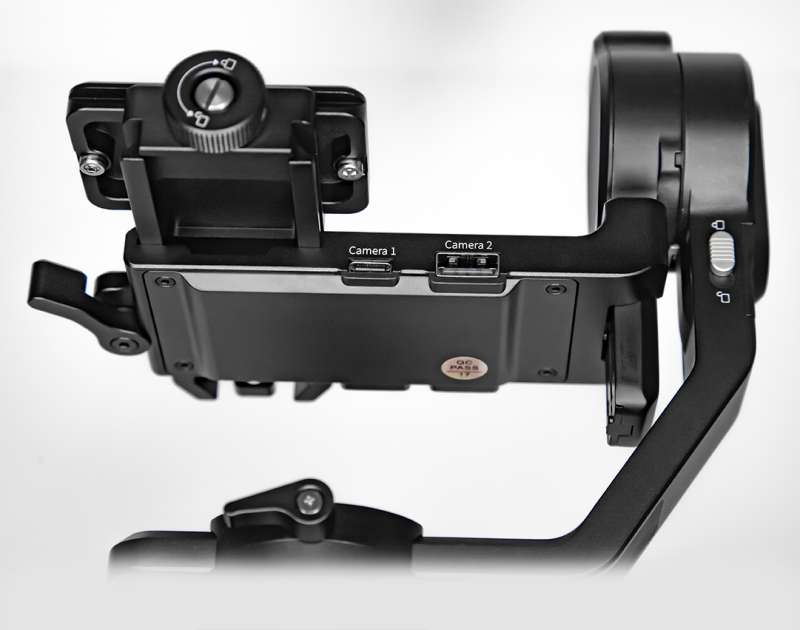 On the fixed plate, there are two USB-A ports along one side and a USB-C port and another USB-A port on the other side. These ports are there so you can connect any of the included shutter release cables to control your camera’s functions or operate and control the follow focus. Manfrotto has included several different types of shutter release cables so there should be one that works for your camera.
On the fixed plate, there are two USB-A ports along one side and a USB-C port and another USB-A port on the other side. These ports are there so you can connect any of the included shutter release cables to control your camera’s functions or operate and control the follow focus. Manfrotto has included several different types of shutter release cables so there should be one that works for your camera.
This entire gimbal feels strong and durable. Everything from the metal arms, to the release plates, to the multi-function knob, and even the lock screws have a nice solid feel to it. I think Manfrotto did a good job with the build quality of this gimbal. I even like that Manfrotto has several accessory mounting threads on the gimbal so that you can add extra accessories to the gimbal such as lights, microphones, or monitors.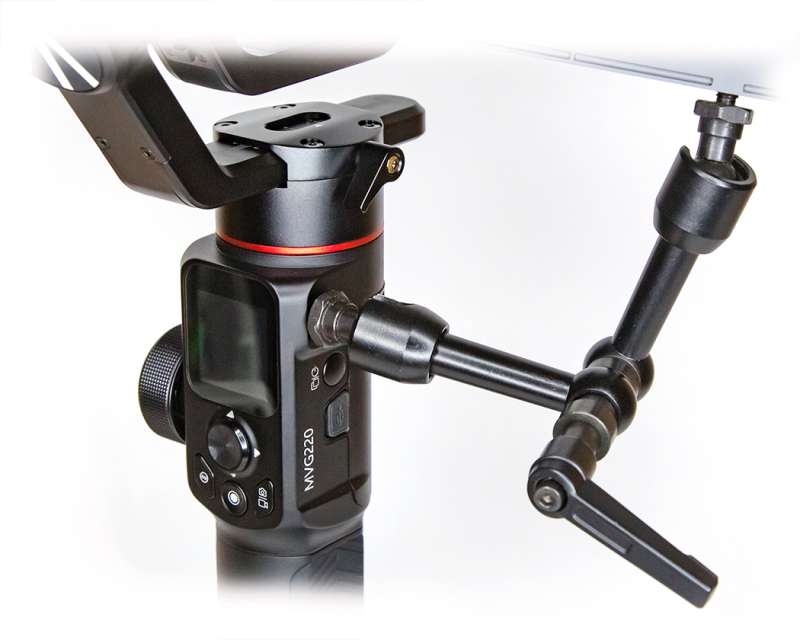
Setup
Prior to using the Manfrotto gimbal, you’ll need to balance the tilt, roll, and pan of the gimbal axis while your camera is attached. This way, the motors on the gimbal will properly balance the camera without any struggle once the power is turned on. Plus, the gimbal will function and operate smoother when the gimbal is pre-balanced since the camera weight will already be properly distributed. The included manual has complete instructions on how to balance the gimbal. There is also an online manual available. I found balancing the gimbal easy to do and didn’t take much time at all.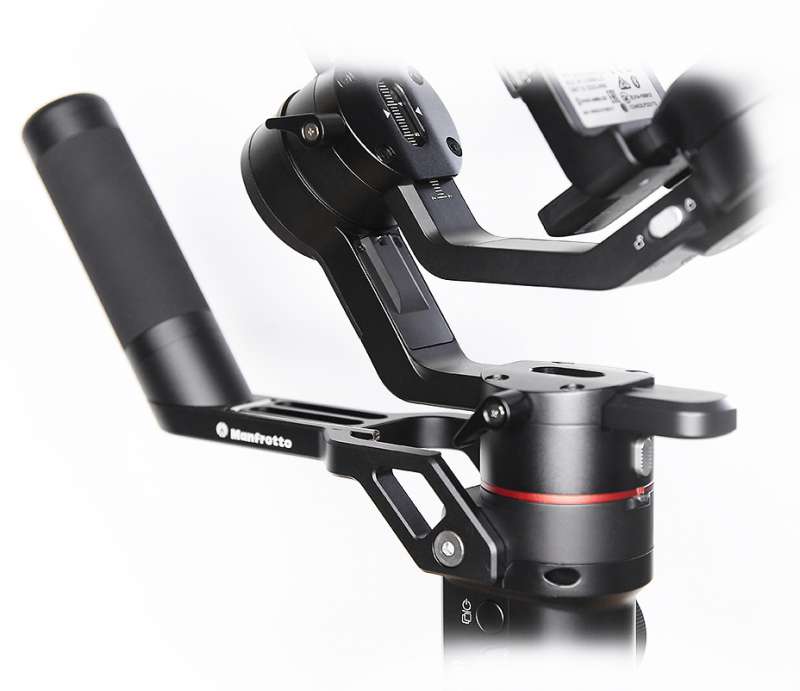
Performance
After balancing the Manfrotto 220 gimbal, I powered it on and the electronic gimbals went right to work. The gimbal’s motors did a great job of balancing the camera and the gimbal was very responsive as I moved it around. Also, switching between modes was quick and easy. I really enjoy using a gimbal with my camera when I am shooting video because it helps to give a more cinematic and professional feel to the footage since it can eliminate the unwanted shakiness and jitter that you would normally get if you just handheld your camera without the gimbal. Sure, you can still probably get some decent footage without a gimbal if you take the extra time and effort to concentrate on keeping your camera super steady but a gimbal like this can do a much better job with little effort. Work smarter not harder.
I was fortunate enough to test out this gimbal along with a few optional accessories such as Manfrotto’s Follow Focus, Remote Control Handle, Carbon Fiber Extension Pole, and the Fast GimBoom. If you like to manually focus your camera then having a follow focus is a must when you are operating a gimbal. As you may or may not know, when you have your camera on a gimbal, the slightest touch with your hand will be visible in your footage, especially when you are trying to turn the camera’s focus ring back and forth. Having the follow focus attached to the gimbal eliminates the need to physically touch the focus ring, thereby eliminating any bump or jolt to the camera.
I really like using the follow focus, however, one short-coming I noticed when using it with the gimbal is that it killed the battery life. Normally, the battery life on the gimbal is seven hours, which by the way, in testing without the follow focus, I actually got close to eight hours, so that was impressive. However, when I had the follow focus attached to the gimbal I only got around two hours and 45 minutes before the gimbal battery died. I am not sure why this would be, but I also noticed that the Tilt arm would get hot so I suspect that maybe this may be putting stress on the arm and overworking it. Now, I am not a hundred percent sure of this, just a suspicion. But the battery life only suffered with the follow focus attached which is a shame because I like using the follow focus with the gimbal. More tests may have to follow.
The next accessory for the gimbal is the Remote Control Handle. I really like how you can mimic the gimbal at a distance with this remote. Of course, you can utilize the Manfrotto app, but the Remote is the next best thing to having the gimbal in your hand. It uses a Bluetooth connection to the gimbal and was very responsive in my opinion. There is even a multi-function knob on the side which was just as responsive as the actual knob on the gimbal itself. What’s great about having the Remote is that you can have a separate operator control the gimbal the same time the main operator has the gimbal in their hands. For example, the Remote operator can control the follow focus while the main operator concentrates on controlling the gimbal. This remote is also handy to have when you want to place the gimbal out of reach but still want to have control of the gimbal. This is definitely an accessory I would recommend to have with this gimbal.
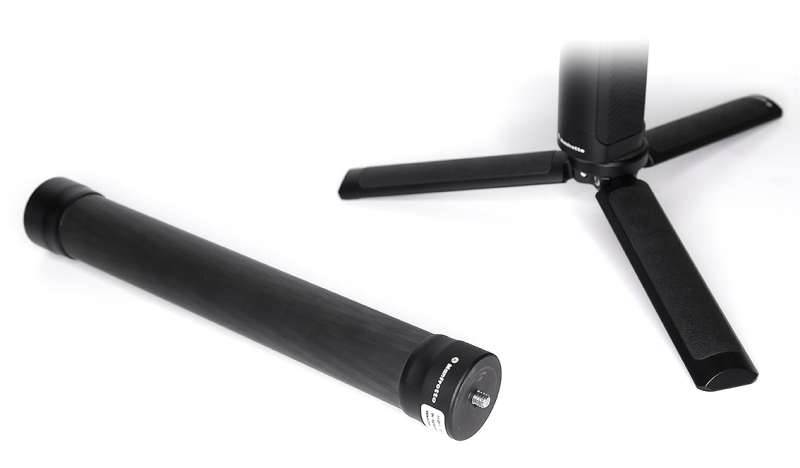 The Manfrotto 220 gimbal comes with a folding tripod that can double as an extension handle. So, the optional Carbon Fiber Extension Pole can be attached between the gimbal and the foldable tripod giving extra length and added stability. Since the Extension Pole is made from carbon fiber, it is super lightweight. But Carbon Fiber Extension pole is as strong as it is light. Adding this Extension Pole not only gives you a little extra reach with the gimbal but also allows you to handle the gimbal for better operation and control. The Carbon Fiber Extension weighs just 0.17 lbs (2.72 oz.) and is 10.83 inches (275 mm).
The Manfrotto 220 gimbal comes with a folding tripod that can double as an extension handle. So, the optional Carbon Fiber Extension Pole can be attached between the gimbal and the foldable tripod giving extra length and added stability. Since the Extension Pole is made from carbon fiber, it is super lightweight. But Carbon Fiber Extension pole is as strong as it is light. Adding this Extension Pole not only gives you a little extra reach with the gimbal but also allows you to handle the gimbal for better operation and control. The Carbon Fiber Extension weighs just 0.17 lbs (2.72 oz.) and is 10.83 inches (275 mm).
Now, the Extension Pole is nice for a bit of reach, but if you want that extra, extra reach, then you’ll want to attach the Manfrotto gimbal to the Fast GimBoom. The GimBoom is also constructed from carbon fiber so it is as lightweight and sturdy as the Extension Pole. But what sets the GimBoom apart from the Extension Pole is that although it is already about twice the length of the Extension Pole, the GimBoom can extend even further to about 45 inches (1150 mm). The GimBoom gives you maximum extension making your footage look like your camera was mounted on a camera jib. And with a little bit of creativity, you can even make some of your footage look as if it was shot with a drone. I thought this was a really cool effect.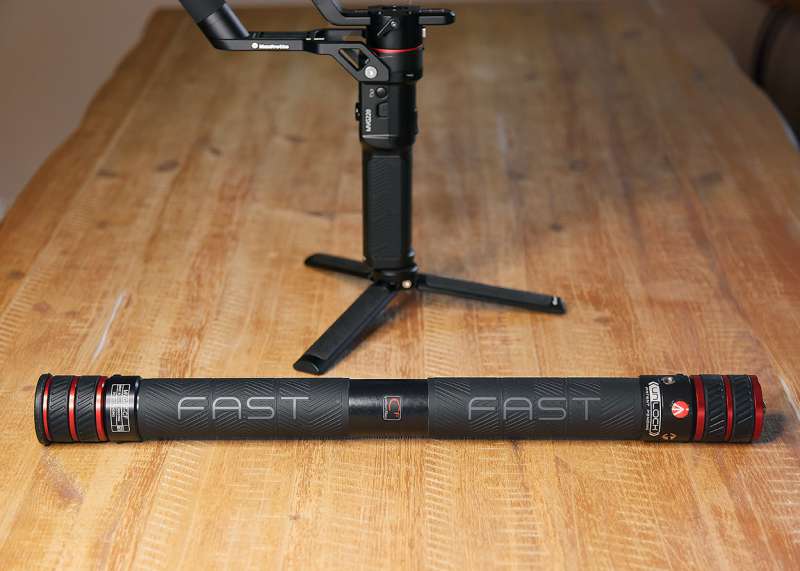
If you are unable to get your hands on either the Extension Pole or the GimBoom, the included Undersling Grip Handle works just as well to get many cool and creative shots with the gimbal. I’m a fan of underslinging the camera to get those interesting low shots, for better balance, or just to help carry the gimbal comfortably. 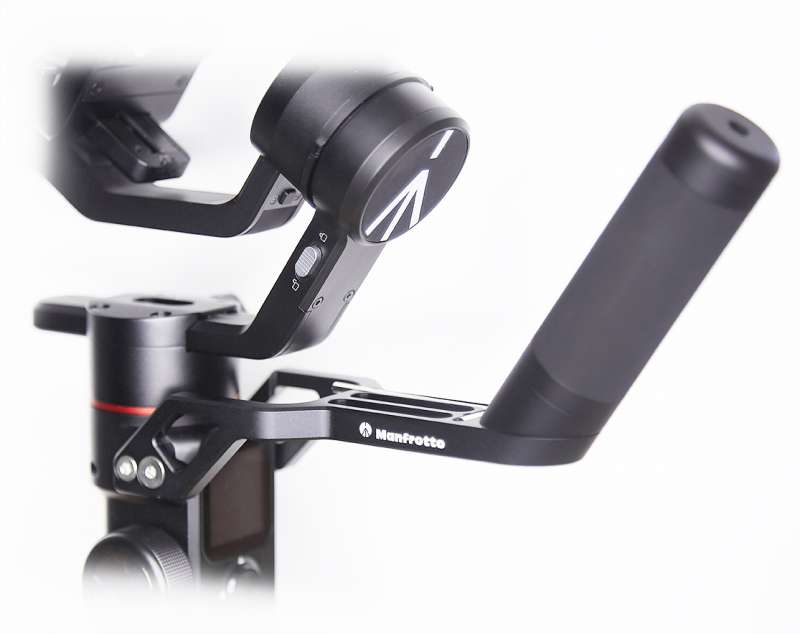
What I like
- Build quality
- Accessible buttons
- Accessory mounting threads
- Multi-function Knob
- Built-in Timelapse feature
- Manfrotto app
- Optional accessories
What I’d change
- Better battery life with follow focus
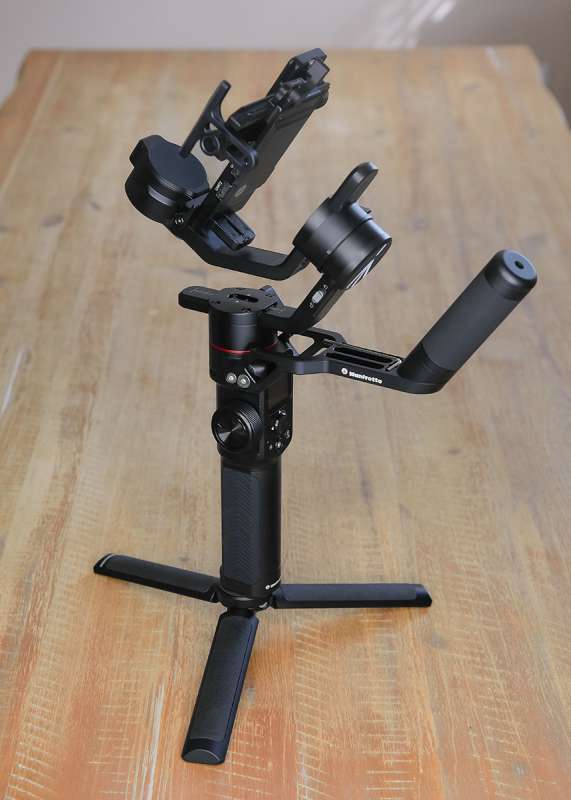
Final thoughts
If you are looking to improve your video footage with smoother and steadier shots, then having the Manfrotto MVG220 3-Axis gimbal would be a great addition to your video shooting gear. Besides capturing smooth flowing footage while you walk, run, climb, skate, ski, or whatever you might do to get that dynamic shot, you can place the gimbal down and still get some great footage while you control the gimbal with the app or Remote Control. Or you can capture remarkable and dramatic footage with the use of the Timelapse feature. So, however, you plan to use the Manfrotto 220 gimbal I think you will be happy with the results.
Price: $359.99
Where to buy: Manfrotto Website and Amazon
Source: The sample of this product was provided by Manfrotto.

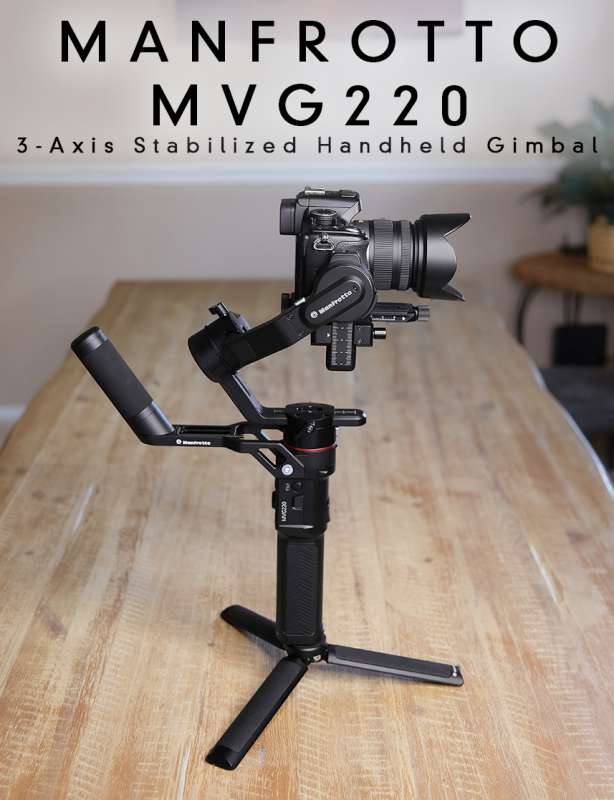

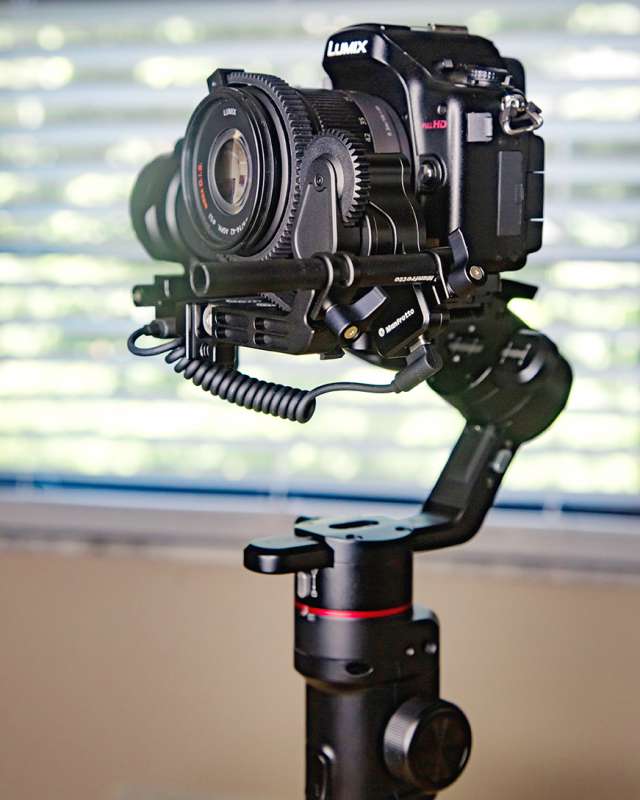
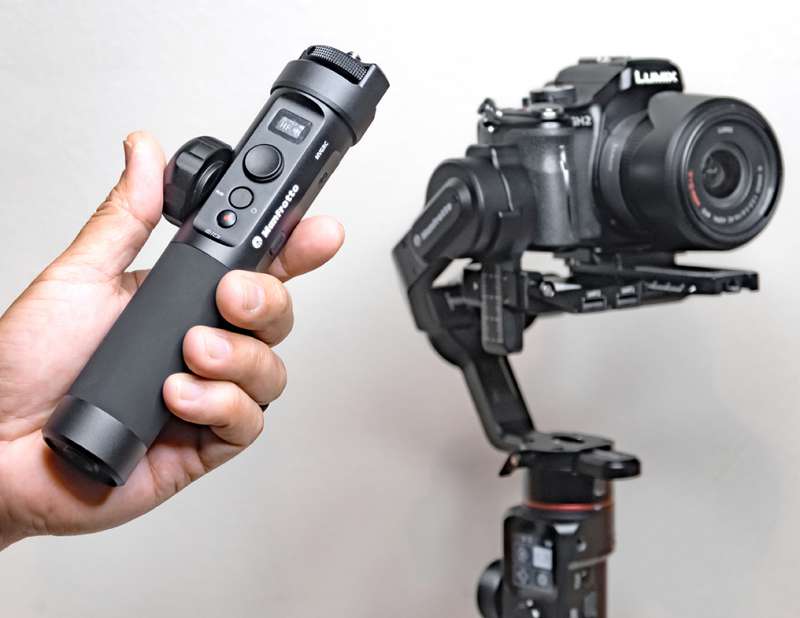
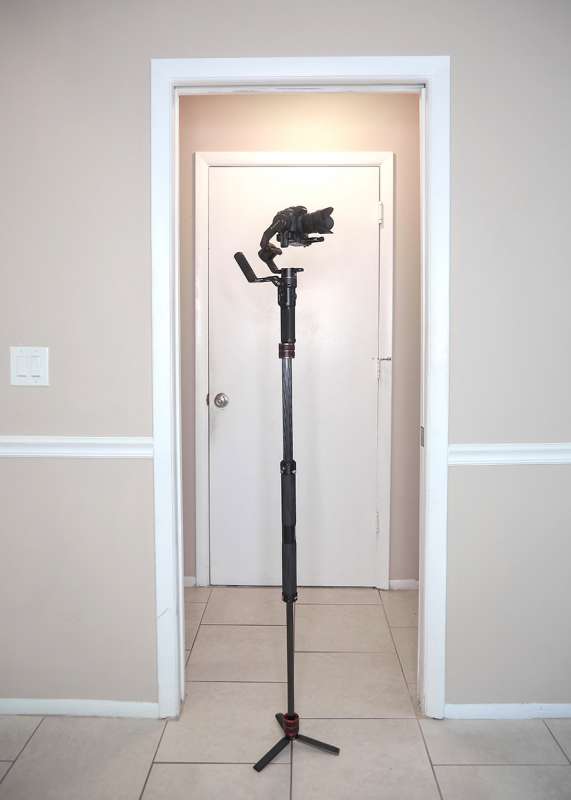
![[From INIU - the SAFE Fast Chage Pro] Experience the safest charging with over 38 million global users. At INIU, we use only the highest-grade materials, so we do have the confidence to provide an industry-leading 3-Year iNiu Care. [22.5W Speedy Char...](https://m.media-amazon.com/images/I/416nS4GRFtL._SL160_.jpg)

Gadgeteer Comment Policy - Please read before commenting
What is amazing to me is that no one else has picked up on this being a re-branded Feiyutech AK2000s, a great gimbal in its own right, which can be had for a fraction of the price, albeit without the optional remote handle controller.
Brandon
You are correct. Good catch.
The MVG220 appears to be a re-brand of the FeiyuTech AK200s.
However, upon checking the prices they seem to be similar in price. Maybe it is the FeiyuTech AK2000s, which is about $120 less, that you had in mind?
Raul